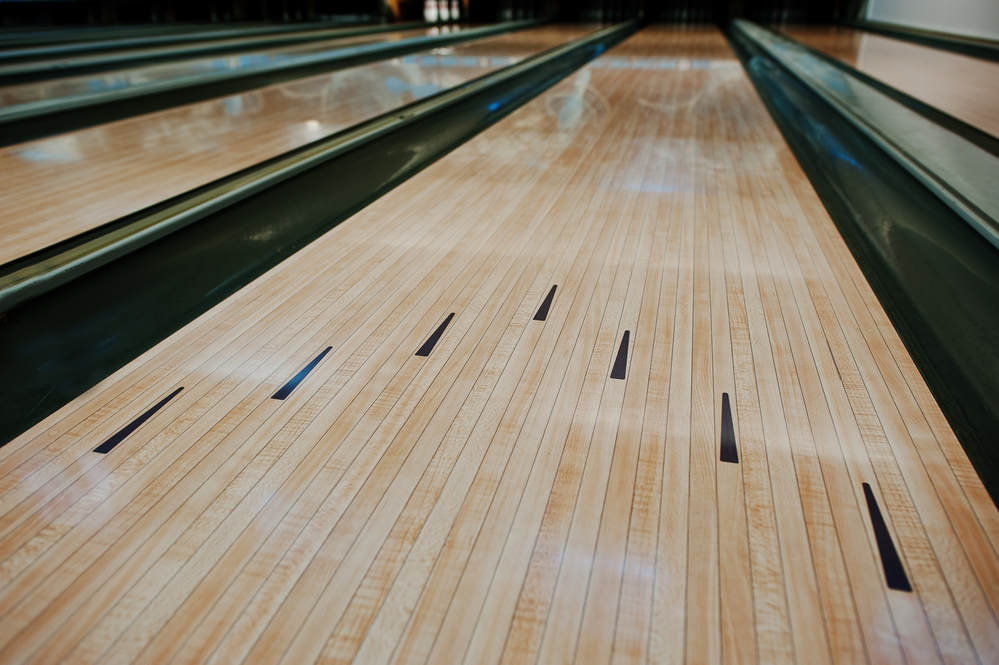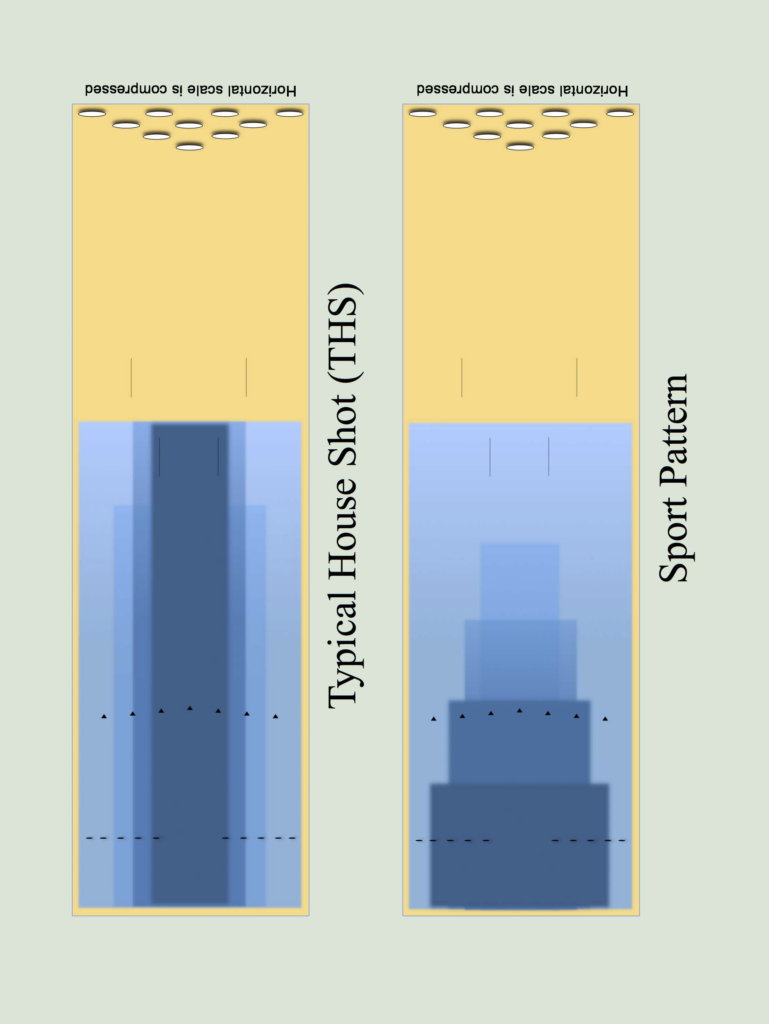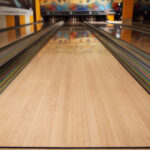
Just like any sport, bowling requires the right playing surface. The lane is that playing surface, and it needs to be properly taken care of in order to provide a fair game. Part of taking care of a bowling lane is oiling it on a regular basis.
But how often should bowling lanes be oiled?
Let's cut to the chase!
Contents
- 1 How Often Should Bowling Lanes Be Oiled?
- 2 How Long Does It Take to Oil a Bowling Lane?
- 3 How Long Does Oil Last on a Bowling Lane?
- 4 How to Know if a Bowling Lane Is Oily or Dry
- 5 How Does Oil Affect Bowling Lanes?
- 6 Why Do Bowling Alleys Oil Lanes?
- 7 Do Bowling Lane Conditions Change Throughout the Game?
- 8 What Oil Pattern Do Most Bowling Lanes Use?
- 9 What Oil Pattern Is Used During League Events?
- 10 Which Oil is Used on Bowling Lanes?
- 11 Why Are Lanes Oiled? What Are the Benefits of Oiling Bowling Lanes?
- 12 Frequently Asked Questions
How Often Should Bowling Lanes Be Oiled?
A good rule of thumb for how often should bowling lanes be oiled, is to oil your lanes every day of league play and every other day when the lanes are not being used for league play. However, this could change depending on factors such as the type of oil used, how often the lane is used, and the climate.
It is always important to consult your lane maintenance manual that came with your bowling equipment. This will also give you specific instructions on how to care for your lanes.

How Long Does It Take to Oil a Bowling Lane?
Oiling a bowling lane is not a quick process. It can take anywhere from 30 minutes to an hour to properly oil a lane.
The first step is to check the oil pattern that has been set for the day. This will tell you how much oil needs to be applied and where it should go.
Next, you will need to clean the lane with a Lane Machine to remove any dirt, dust, or debris that has built up on the lane.
Once the lane has been cleaned, you can begin oiling. You will need to apply the oil evenly across the entire length of the lane. Start at the foul line and work your way down the lane.
After you have applied the oil, you will need to let it sit for a few minutes so that it can be absorbed into the lane.
Finally, you will need to use a Lane Machine again to spread the oil evenly and remove any excess oil. And that's it!
How Long Does Oil Last on a Bowling Lane?
Oil will last anywhere from one to three games before it needs to be reapplied. However, this can vary depending on how much oil is used and how often the lane is used.
It is always a good idea to check the oil pattern before each game to make sure that there is enough oil on the lane.
If you find that the oil is not lasting as long as it should, you may need to increase the amount of oil you are using or apply the oil more often.

How to Know if a Bowling Lane Is Oily or Dry
One way to tell if a bowling lane is too oily or too dry is by the way the ball reacts when it rolls down the lane.
- If the ball is hooking less than usual, this could be a sign that the lane is too oily. On the other hand, if the ball is hooking more than enough, this could be a sign that the lane is too dry.
- Another way to tell if a bowling lane is too oily or too dry is by the condition of the lane. If the lane looks shiny and wet, this could be a sign that it is too oily. If the lane looks dull and dry, this could be a sign that it is too dry.
If you are unsure about the condition of the lane, it is always a good idea to ask a bowling lane technician or your bowling alley manager. They will be able to help you determine if the lane is too oily or too dry and how to fix the problem.
With that in mind, let's take a look at how oil affects bowling lanes when a bowling ball is rolled.
How Does Oil Affect Bowling Lanes?
Below is how different oil applications will affect how your bowling ball will react when rolled down the lane.
How Does a Bowling Ball Roll on a Lane With Too Much Oil?
If there is too much oil on a bowling lane, the ball will not be able to grip the lane and will slide instead of hooking. This can make it difficult for bowlers to control their shots and can lead to lower scores.
How Does a Bowling Ball Roll on a Lane Without Enough Oil?
If there is not enough oil on a bowling lane, the ball will grip the lane too much and will hook more than usual. This can also make it difficult for bowlers to control their shots, increase gutter balls and can lead to lower scores.
How Does a Bowling Ball Roll on a Lane With the Right Amount of Oil?
The right amount of oil on a bowling lane is important for two reasons.
- First, it helps the ball grip the lane so that bowlers can control their shots.
- Second, it helps protect the lane from wear and tear.
Why Do Bowling Alleys Oil Lanes?
Bowling lanes are coated with oil to help the balls to move more smoothly and prevent them from sticking to the lane and rolling to the gutters. The oil can help to extend the life of the lane by preventing wear and tear, and sparking. The oil is also helpful in improving ball control and accuracy by reducing friction.
Do Bowling Lane Conditions Change Throughout the Game?
Yes, bowling lane conditions change throughout the game. The conditions change for a number of reasons.
First, as more bowlers use the lane, the oil will start to break down and will become less effective.
Second, if the lane is not properly maintained, the oil can start to build up in certain areas and will create dry spots.
Finally, if the temperature in the bowling alley changes, this can also affect how the oil behaves on the lane.
For all these reasons, it is important to check the oil pattern before each game and to make adjustments as needed.
A professional can adjust to the changing conditions of a bowling lane throughout their game. If you're bowling, keep in mind that the oil will quickly wash away from the lane.
One shot, then another ten shots later, and the ball's trajectory will have altered dramatically. Again, this indicates that the bowling ball will have a greater hook.
You should pay attention to how the ball moves as you play the game. We can promise that if you begin seeing the shot's ever-changing subtleties, you will become a far better bowler!
What Oil Pattern Do Most Bowling Lanes Use?
While there are many different oil patterns that can be used on bowling lanes, most bowling alleys use what is known as a house style oil pattern.
House patterns are designed to be easy for bowlers of all skill levels to use.
They typically have a moderate amount of oil in the middle of the lane with less oil on the outside edges. This allows bowlers to hook the ball without making it too difficult to control their shots.
If you are bowling on a lane with a house style oil pattern, you should not need to make too many adjustments to your shot.
However, if you are bowling on a lane with a different oil pattern, you may need to make some adjustments to how you bowl.
For example, if you are bowling on a lane with a lot of oil in the middle and less oil on the outside, you may need to bowl closer to the gutter so that your ball does not hook too much.
On the other hand, if you are bowling on a lane with less oil in the middle and more oil on the outside, you may need to bowl closer to the middle so that your ball does not slide too much.
No matter what oil pattern you are bowling on, it is important to pay attention to how your ball is reacting and to make adjustments as needed.
What Oil Pattern Is Used During League Events?
During league events, most bowling alleys will use what is known as a tournament oil pattern.
Tournament oil patterns are designed to be more challenging for bowlers to use.
They typically have less oil in the middle of the lane and more oil on the outside edges. This makes it more difficult for bowlers to control their shots and can lead to lower scores.
If you are bowling in a league event, you should expect the lane conditions to be more challenging than they would be during a casual game.

Which Oil is Used on Bowling Lanes?
The type of oil that is used on bowling lanes can vary.
Some bowling alleys use mineral oil, while others use synthetic oil.
Mineral oil is a slippery and natural product that is made from petroleum. It is typically less expensive than synthetic oil and can be easier to find.
Synthetic oil is a man-made product that is designed to mimic the properties of mineral oil. It is typically more expensive than mineral oil but can be less messy and easier to clean up.
No matter which type of oil is used on the bowling lanes, it is important to make sure that it is properly diluted before it is applied.
If the oil is too thick, it can build up on the lanes and make them difficult to bowl on.
If the oil is too thin, it will not provide enough protection for the lanes and they will quickly become dried out and damaged.
It is important to find a balance so that the lanes are properly protected without being too difficult to bowl on.

Why Are Lanes Oiled? What Are the Benefits of Oiling Bowling Lanes?
Picking up where we left off earlier, oil is essential for keeping bowling lanes in good condition.
Without oil, the lanes would become dry and brittle, which would make it difficult for the ball to roll down the lane.
Oil also helps to protect the lanes from wear and tear. When a bowling ball rolls down the lane, it can cause the lane to become scratched and gouged. By applying oil to the lanes, you can help to prevent this damage from happening.
Oil also affects how the ball hooks when it is rolled down the lane. The right amount of oil will allow the ball to hook smoothly, while too much or too little oil can cause the ball to hook erratically.
Finally, oil can also affect the speed of the ball. If the lane is too dry, the ball will not be able to gain enough traction to reach its full potential. On the other hand, if the lane is too oily, the ball will be able to travel too fast and could end up going off the lane.
With all of this in mind, it is important to make sure that you oil your lanes regularly and use the right amount of oil. By doing so, you can help to keep your lanes in good condition and ensure that your games are fair and fun for everyone involved.
Frequently Asked Questions
How Often Should Bowling Lanes Be Replaced?

While the exact lifespan of a bowling lane depends on how often it is used and how well it is maintained, most lanes can last for 10 to 15 years before it can be replaced. However, it is important to note that even with proper care, lanes will eventually need to be replaced sooner.
Can You Use Any Type of Oil on Bowling Lanes?

No, you should not use any type of oil on bowling lanes. Only use products that are specifically designed for use on bowling
Do Bowling Balls Absorb Oil?

No, bowling balls do not absorb oil. The oil is only present on the surface of the lane and does not seep into the ball. However, Reactive-resin and urethane bowling balls can absorb oil and use it to their advantage.
Related Articles
As you can see, oil is essential for keeping bowling lanes in good condition. Without it, the lanes would become dry and brittle, which would make it difficult for the ball to roll down the lane.
Oil also helps to protect the lanes from wear and tear. When a bowling ball rolls down the lane, it can cause the lane to become scratched and gouged. By applying oil to the lanes, you can help to prevent this damage from happening.
It is important to make sure that you oil your lanes regularly and use the right amount of oil. By doing so, you can help to keep your lanes in good condition and ensure that your games are fair and fun for everyone involved.
Kira Byrd, a Certified Fraud Examiner, holds a B.S. in Accounting from the University of Alabama at Birmingham. With a passion for bowling from her childhood, Kira has poured her expertise and personal experiences into creating and nurturing Bowling For Beginners. Kira's mission is to meet new bowlers where they are and guide them toward consistently achieving higher scores. With a focus on skill development and strategic techniques, she empowers readers to take control of their game and unlock their true potential.
Bowling For Beginners embodies strict editorial integrity, ensuring reliable and unbiased information. Kira's commitment to delivering valuable insights and practical strategies is reflected in every article. Here's an explanation of our editorial policy and how we get money.





